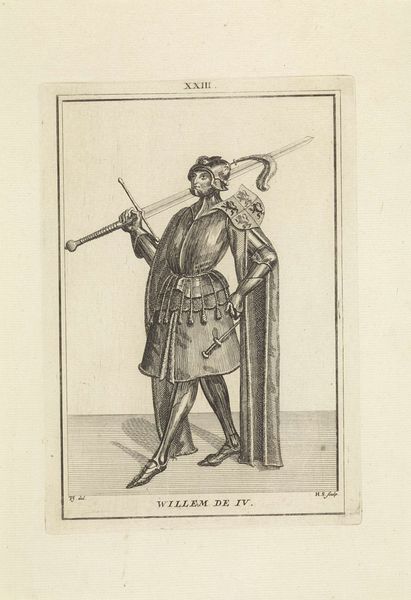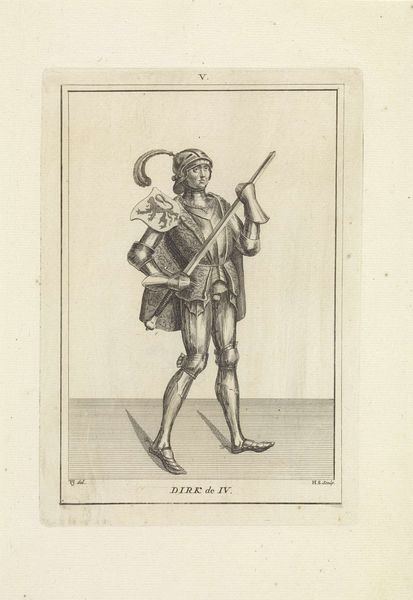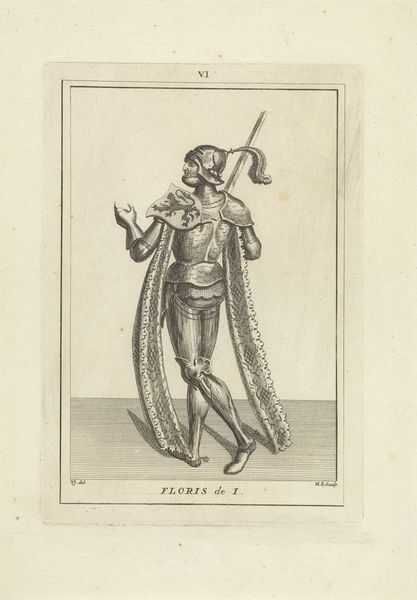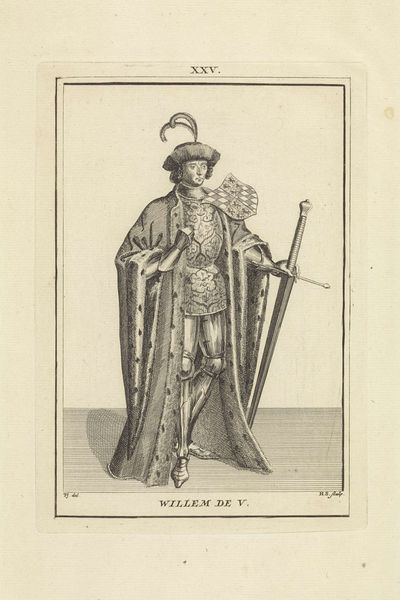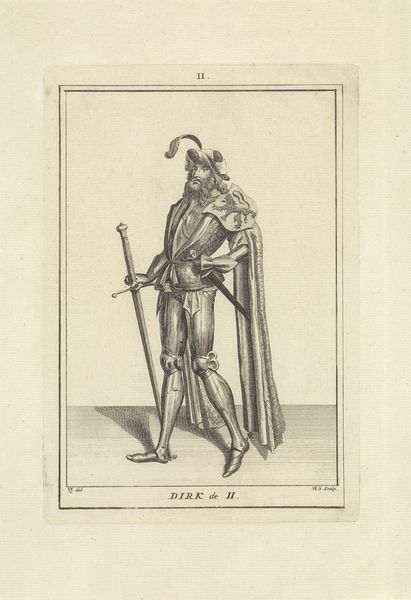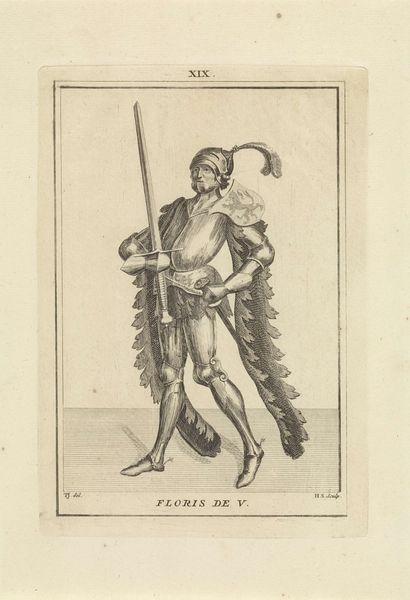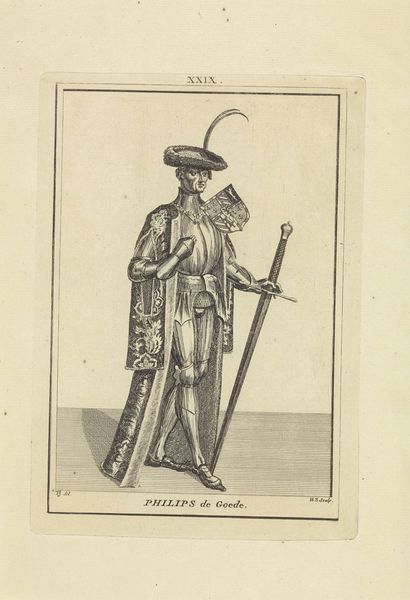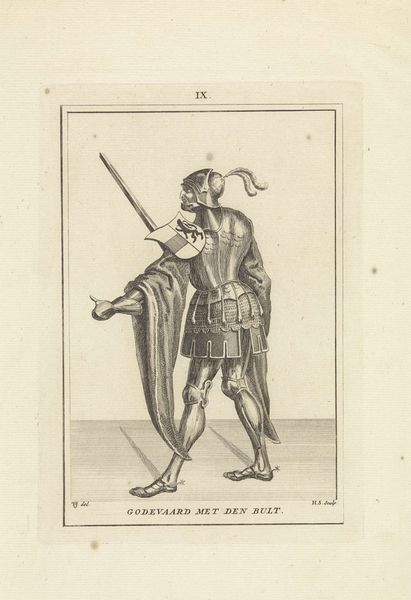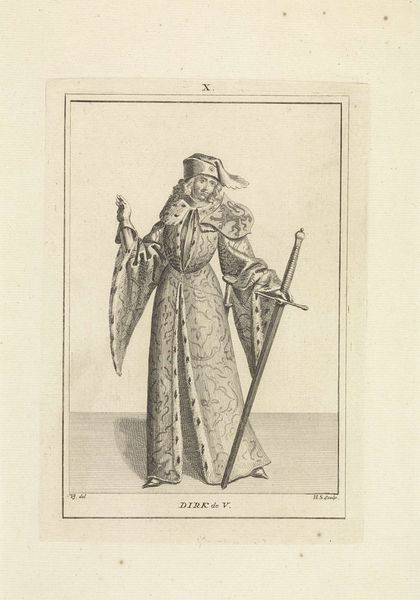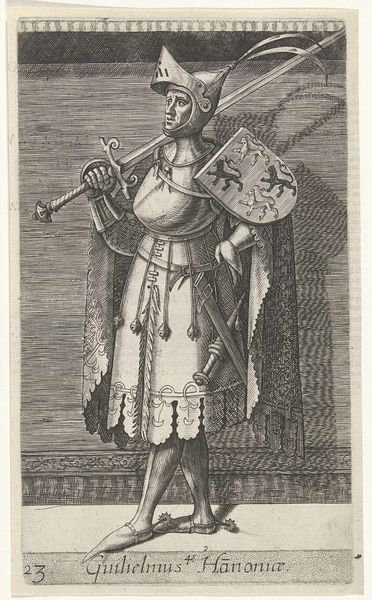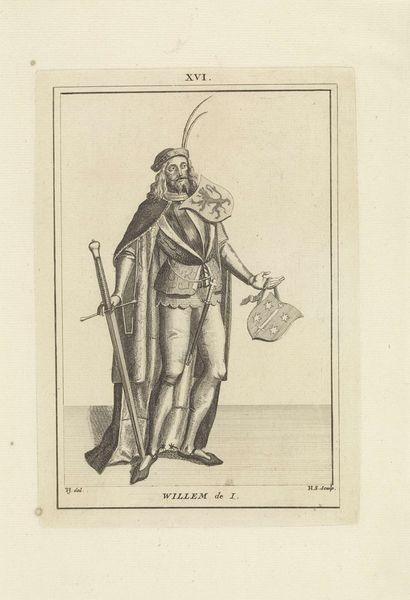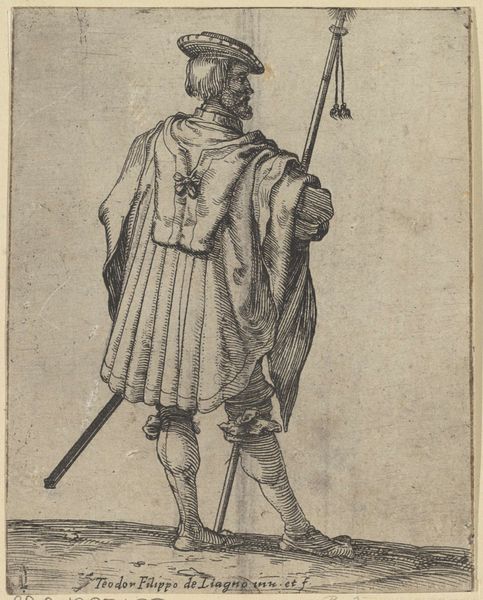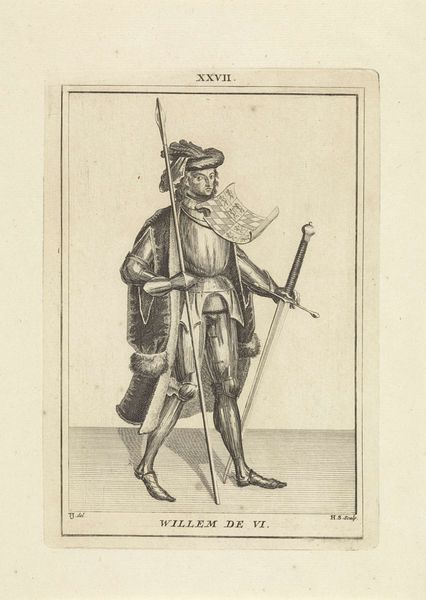
print, engraving
#
portrait
#
baroque
# print
#
history-painting
#
engraving
Dimensions: height 192 mm, width 135 mm
Copyright: Rijks Museum: Open Domain
Curator: Before us stands Hendrik Spilman's "Portret van Karel de Stoute, hertog van Bourgondië," an engraving from 1745. Its current location is the Rijksmuseum. What strikes you first about it? Editor: The rigid pose, the almost clinical detail in rendering the armor—it all speaks to me of calculated power and, perhaps, a hint of underlying fragility. Does that resonate with the social and material context? Curator: Absolutely. Spilman created this engraving during the Baroque period, a time of heightened emphasis on detail and historical representation. The very act of reproducing Charles the Bold's image speaks to the consumption of history, making the past into a commodity through printmaking technology. Consider the materials—ink, paper, the copperplate. Each held specific values and demands, reflecting the networks of patronage and skill involved in its production. Editor: And there’s an implied audience here too. This isn't courtly flattery; it's a reproduction for distribution. The question of access really interests me: who could afford it, where was it consumed, and what was its social impact? There is such a strong, if perhaps misplaced, desire for realism present, especially as history painting and portraits went. Does the print aim to educate, intimidate, or simply commemorate the Duke? Curator: All valid points, really. Its presence in the Rijksmuseum certainly elevates the work from a possibly utilitarian print into an artifact, blurring our lines between art and artifact. Perhaps Spilman, consciously or not, comments on this even then. Editor: I suppose, in the end, a bit of the "boldness" suggested by his title survives, doesn't it? Or is it merely the glint of his polished armour, fooling me into thinking it still matters. Curator: Well said, both are certainly worthy to ponder, and perhaps we should allow listeners that opportunity.
Comments
No comments
Be the first to comment and join the conversation on the ultimate creative platform.
